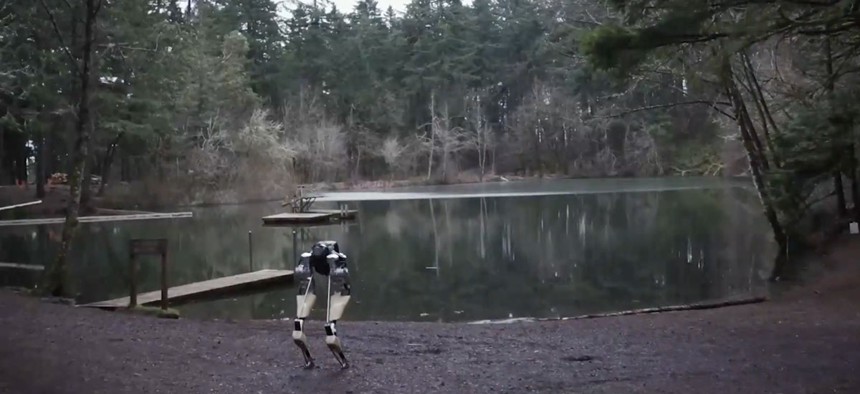This Startup Thinks Future of Deliveries Is an Ostrich-Shaped Robot

YouTube/Oregon Statue University
This leggy robot that can traverse any awkward footings that come naturally, or at least more easily, to humans.
In a world where engineers are trying to disrupt delivery with drones and coolers on wheels, one company believes there’s another way: robots shaped like the world’s largest flightless birds.
Agility Robotics, a startup spun out of Oregon State University, today unveiled Cassie, a two-legged robot with, as IEEE Spectrum pointed out, a confident ostrich-like strut.
“Flightless birds were motivations for this project,” Agility Robotics CEO Damion Shelton told Quartz.
Cassie’s relatively odd gait apparently helps it address a known (and often hilarious) problem with two-legged robots: tricky situations send them falling over like steel-clad felled trees. As its name suggests, Agility Robotics intends to right that wrong, in part by turning its experimental Cassie into a leggy robot that can traverse any awkward footings that come naturally, or at least more easily, to humans.
The legs are only the beginning. Eventually, Cassie will get arms and sensors to help it better interact with the world, and to help it get up if it topples over. Cassie’s descendants—equipped perhaps with torsos and other body parts that make them a bit less terrifying—could be employed on delivery runs, search-and-rescue missions, or even as prosthetic limbs. Shelton says Agility wants Cassie to “be the standard for legged autonomy.”
Agility will spend the next year sending Cassie to academic and corporate research departments. The company is keen to provide commercial services as soon as possible; by 2017, Shelton hopes to be selling Cassie to companies that require surveying services in situations where the robots don’t necessarily need to be autonomous.

Cassie’s adventures so far have mostly been about walking. During tests in Oregon, Shelton says passersby were generally unfazed.
“Because the gait is so much like an animal’s, people don’t stop and stare,” he says. “It sorts of blends in.”
Asked if he thinks a leggy package-carrying robot would get robbed or dismembered on its own, Shelton acknowledged there would be “an adjustment period… But people don’t regularly mug UPS drivers.”
In certain delivery situations, autonomous drones will always be more useful, but Shelton points out because of the way that we’ve shaped our world, robots shaped like us are often best-suited to interact with it. He gives the example of Pittsburgh, Pennsylvania (where Agility Robotics has an office): The city’s aging and confusing infrastructure means some houses are only accessible via long stairways that would be unmanageable for a delivery drone.
Shelton anticipates a lot more automation ahead—self-driving trucks delivering packages to Agility robots that carry them directly to customers’ doors, for example. But he doesn’t expect human FedEx and UPS drivers to be displaced anytime soon. Instead, he says, delivery people will become more like customer-service representatives, “with robots doing the heavy lifting.” Fortunately for Cassie, the best way to lift is with your legs.


